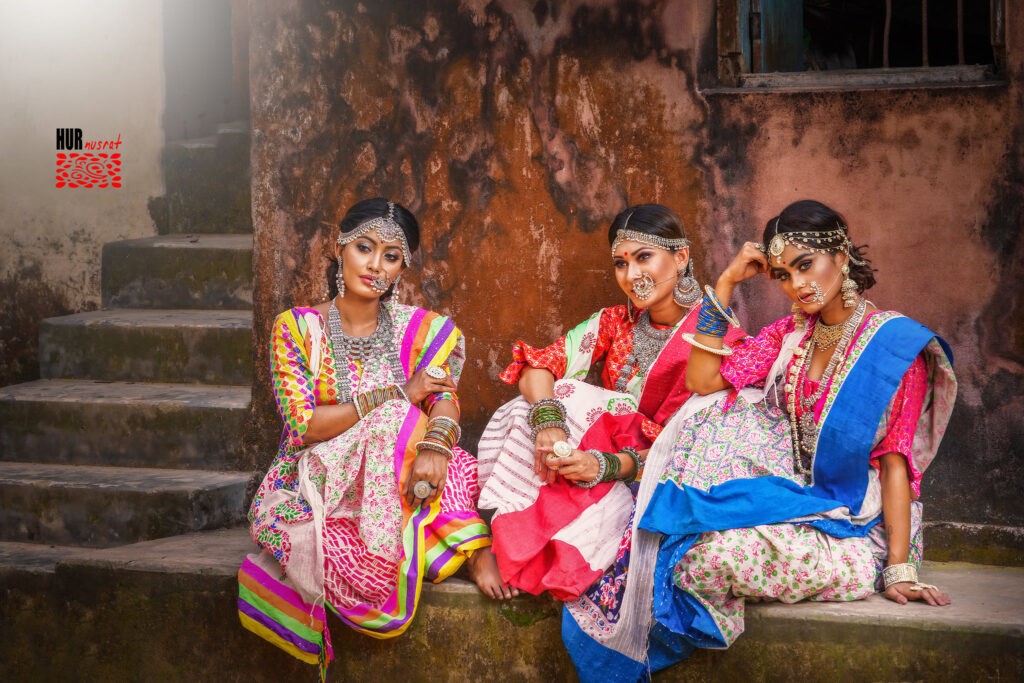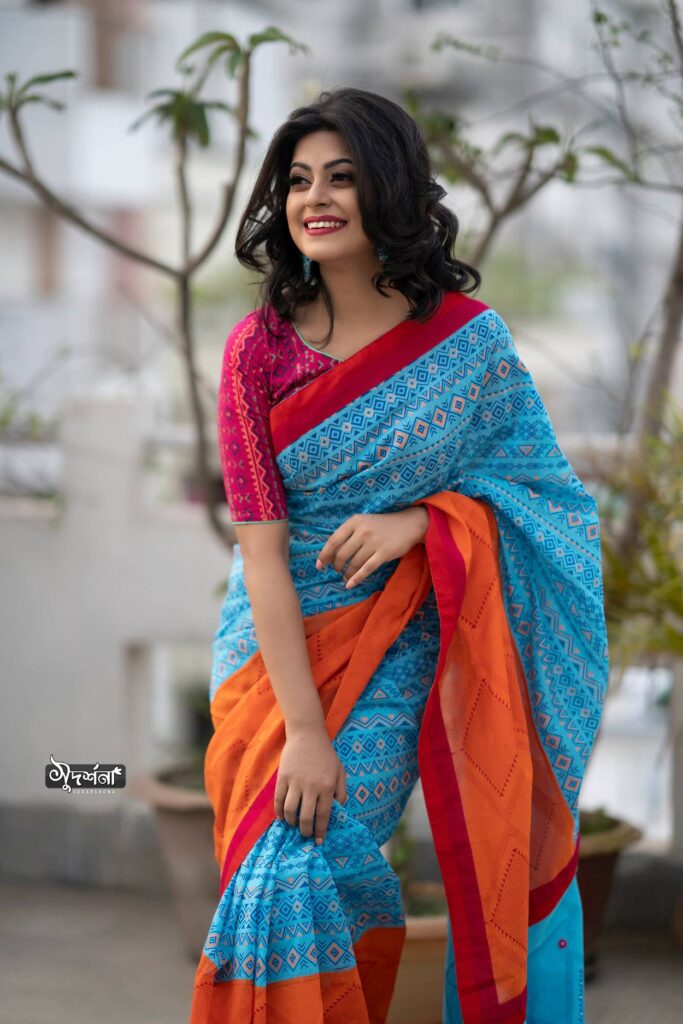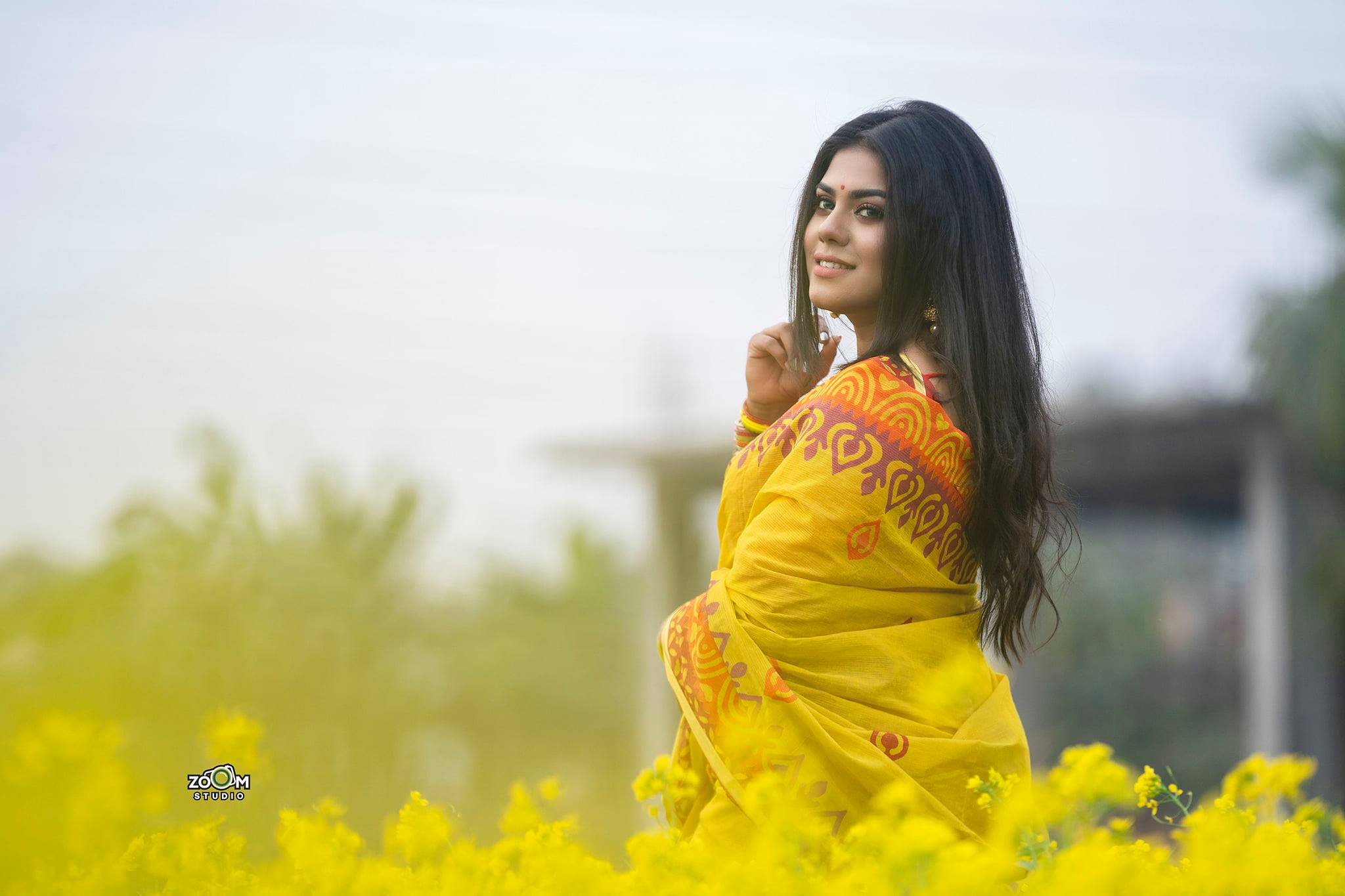For Bengali women, the saree is more than just a piece of clothing; it represents an investment. And almost always, there’s a history surrounding how they received their first saree. In most cases, the story wrapped in each saree can only be comprehended through the sentiment created early in their teenage years. Perhaps that was the first time they grew fascinated with and lusted after their mother’s saree. Maybe it was when their significant other gave it to them as a present. In Bangladesh, there are many different varieties of sarees, which are lovely and elegant.

Wearing a saree is also a part of culture and custom for ladies. This magnificent piece of clothing, which is only twelve feet long and features diverse designs, colours, and beautiful weaving, has given every Bengali woman a distinct identity. In today’s blog, we’ll go through the various styles of sarees found in Bangladesh, each of which is steeped in the heritage and sentiment of countless women.
The History of Saree:

The word ‘sari’ comes from ‘sattika,’ which was first used in Jain and Buddhist literature to describe women’s clothing. The history of sari-like draperies may be traced back to the Indus Valley Civilization, which flourished in the northwestern portion of the Indian subcontinent between 2800 and 1800 BC.
The whole three-piece modern manner of wearing a Saree was known as Poshak, a generic term for attire. Cotton was initially farmed and woven in the 5th millennium B.C. on the Indian subcontinent. Indigo, lac, red madder, and turmeric were among the dyes utilized throughout this period, and they are still used today. Between 2450 and 2000 B.C., silk was woven. The statue of an Indus Valley priest wearing a drape is the earliest known portrayal of the Saree in the Indian subcontinent.
Tight bodices or cholis (blouses) are thought to have evolved in various regional styles between the 2nd century B.C. and the 6th century A.D., where early cholis (blouses) were front covering tied at the back; this style was more common in parts of ancient northern India; this ancient form of bodice or choli (blouse) is still common in the state of Rajasthan today, according to sculptures and paintings.

The origins of the saree are a mystery. “At that time, along with rings, pendants, necklaces, and adhna (blouse), girls used to wear saree down to the ankles,” historian Ramesh Chandra Majumdar said of ancient Indian attire. This was later deduced by looking at certain Pal-period sculptures in Paharpur.
According to this information, the saree was the traditional attire in the 18th century. The custom of wearing sewed clothes did not exist in ancient India, according to another historian, Niharranjan Roy. The clothing was referred to as ‘dhoti’ by males and ‘saree’ by women.
After learning to sew, these single-piece clothing were popular in many locations under various names, such as ‘Ghagra’ or skirt, salwar, kurta, kameez, etc. However, in some locations, individuals still wear this single item of clothing. Bangladesh, West Bengal, Orissa, Assam, Kerala, Karnataka, Tamil Nadu, Maharashtra, Andhra Pradesh, Gujarat, Uttar Pradesh, Himachal Pradesh, Bihar, Punjab, Sindh Province, and Punjab of Pakistan are the current boundaries of these areas.
Parts of Saree:

The major visible sections of a saree are divided into the following categories:
Draping: Draping is used as a dupatta or head covering as well as to cover the upper body. When wearing a saree, this is the most noticeable area. As a result, designers make a great effort to embellish this section using various design approaches to make it stand out.
Pleats – Creating pleats is the most difficult aspect of wearing a saree. Pleats that are well-organized and well-placed draw the viewer’s attention. As a result, diverse designers place a greater emphasis on the bottom regions of the pleat, employing various approaches to express their creativity in this area.
Edge- The lower area of the saree where designers frequently construct borders with decoration or other application work to improve the overall appeal. Women are becoming more aware of cutting-edge design.
Body – This is the less apparent component that generally goes inside when wearing a saree.
Different ways of wearing saree:
According to diverse cultures, the saree has aesthetic and artistic characteristics reflected in people’s lifestyles. The different and unique draping styles of sarees highlight their beauty. Adorning the fundamental form of wearing a saree, known as the “Nivi” style, is simple and one of the most popular techniques, which originated in India’s Deccan area.
The practice of merely wearing a saree is no longer practised. The blouse and petticoat later become mandatory parts of the outfit. There was no such thing as wearing a saree in ancient times as there is today. Shakuntala Debi of Kalidas wears a different saree than Vidya, Bharat Chandra’s poem Vidyasundar. Not only is there a difference in the variations, but also in the way they were worn. Women used to wear sarees in two different ways: ‘Atpoure’ (twisting only once) and ‘Poshaki.’ Later on, the ‘Kuchi technique’ became popular. Although this practice was once ridiculed in Bengali culture, educated and modern girls were the first to use it.
Jnandanandini Devi, Satyendranath Tagore’s wife, pioneered the Parsi saree style, which has since become the standard method for all ladies to wear sarees. Tagore’s residence was also instrumental in establishing the tradition of wearing blouses with sarees. The tradition of wearing a saree in the ‘Atpoure’ style, on the other hand, has not died out. The elderly have continued this habit in rural areas even today. Today’s young ladies also wear sarees in this manner for occasions such as Pohela Baishakh, Durga Puja, and weddings.
In his book “Saris of India: Tradition and Beyond,” ta Kapur Chishti, a saree historian and famous textile scholar, lists 108 different ways to wear a saree. In addition, he identified 14 various ways of wearing a saree from 14 different states: Gujarat, Maharashtra, Goa, Karnataka, Kerala, Tamil Nadu, Andhra Pradesh, Orissa, West Bengal, Jharkhand, Bihar, Chhattisgarh, Madhya Pradesh, and Uttar Pradesh.
The Glory of Bangladeshi Saree:
Despite the fact that a lot has changed in Bangladeshi culture over time and that urbanization and the influence of western culture have brought some major changes in people’s lives in Bangladesh, the country’s amazing traditions have clustered under the labels of folk, modern, and contemporary culture.
As a Muslim country, women in both cities and rural areas consider particular factors when choosing to clothe, as ladies are expected to expose less skin in front of their hands, heads, and feet.
As a result, the “Saree” is regarded as the most important and traditional garment worn by Bangladeshi women rather than any other costume. Moreover, Bangladeshi women’s first preference for celebrating any form of cultural or religious holidays, from ancient to present times, is “Saree.” This is due to the country’s long beautiful legacy and ideals.
Bangladeshi sarees have become a worldwide fashion trend, thanks to the skilled hands of Bangladeshi designers, artisans, and craftsmen. Even in this period of rock ‘n’ roll, fashion has positioned itself as one of the top fashion destinations, cherished and revered by people worldwide, with the saree as a fundamental component of Bangladeshi culture.
The weaving history of Bangladesh is mostly known for fine linen Muslin. However, unlike India, Bangladesh is less interested in dressmaking or stitching, preferring instead to focus on weaving; as a result, sarees stay unstitched and draw attention due to their unique style and high quality.
Among all the different sarees in Bangladesh, Jamdani is the most unique. This saree is made from corpus cotton with a unique weaving method. The designs and the patterns are embellished with the third kind of thread while weaving Jamdani.
It is usually woven with yarn, with a thread count of 60-70. Jamdani reached its peak during the Mughal period. At that time, both men and women used to wear clothes made of Jamdani. Jamdani was also used in the royal court in the 15th and 16th centuries.
The appeal of Jamdani is still untainted. The reason behind this is the geometric pattern in the design. Chinese writers who came to the region in the 15th century also praised the Muslin here. Abul Fazal, a courtier of Mughal Emperor Akbar, did not forget to praise this fine cloth made in Sonargaon. After declaring Dhaka as the capital of Bengal in the early 17th century, European traders started coming to Bengal. Much of the information about Muslin is found in the documents of these trading companies and the descriptions of contemporary European writers. When the British won the Battle of Palashi in 1757, Muslin gradually disappeared from Bengal.
Currently, various local fashion houses, entrepreneurs, and fashion designers are trying to revive the muslin industry by making all sorts of efforts.
Among Bangladesh’s various types of sarees, banarasi and katan are shining bright in their glory. Whether in the workplace, house, or travelling, most women feel comfortable in cotton sarees.
In Bangladesh, loom woven cotton sarees are produced in Pabna, Sirajganj, and Tangail. Apart from that, a small quantity of cotton saree is also produced in Dhaka and Comilla. However, the name Tangail pops into mind when it comes to cotton sarees. Cotton sarees of Tangail are renowned and very popular among Bengali women. There are huge areas across Tangail dedicated to weaving cotton sarees, including Pathrail, Bishnupur, Delduar, Bajitpur, etc.
There are different types of looms for weaving cotton clothes, of which Power Loom, Peat Look, Jamdani, Chittaranjan etc., are notable. In a manual foot loom mechanism, rows after rows yarns are hung and arranged with leads and then are constantly lifted up and down according to the design.
Bangladeshi women are known for their striking appearances and draping of traditional sarees; thus, when someone mentions Bangladeshi women, the first image that comes to mind is of a lady with a large round Dot (“tip” in Bangla) on her forehead, artistic eye make-ups, fantasy in red lips, and, of course, our Traditional Saree, which completes every Bangladeshi woman’s appeal.
Because every Bangladeshi woman is born to look stunning in sarees, the traditional Bangladeshi saree is regarded as a cultural emblem of Bangladesh due to its traditional beauty. Bangladeshi ladies are extremely picky, inventive, and adventurous when it comes to saree styling. Bangladeshi fashion is never complete without a focus on our handcrafted sarees. However, it is a source of great regret that every year, particularly during the Eid holidays, Bangladeshis flock to India in large numbers.
Purchasing a large number of sarees, even though Bangladesh’s local Eid market is massive. Although our traditional handicraft has earned a reputation for producing world-class goods in India and around the world, a considerable number of Bangladeshi ladies travel to Kolkata and other nearby provinces in India every year in quest of sarees.
Despite the fact that the issue is not illegal, it is past time for our people to recognize and preserve our local crafts and heritage by spending more on our items rather than purchasing abroad. For example, suppose someone understands the true beauty of wearing our classic Saree with the appropriate accessories and look. In that case, they will always choose this to highlight their bold characteristics and enhance their beautiful appearance.

